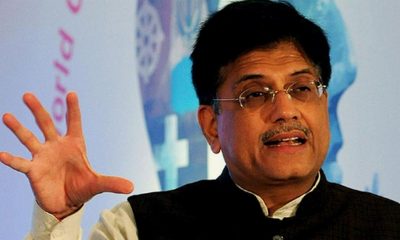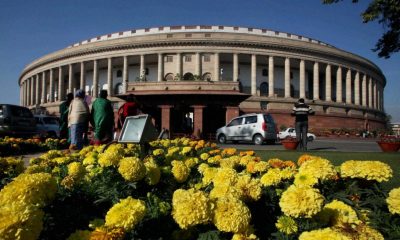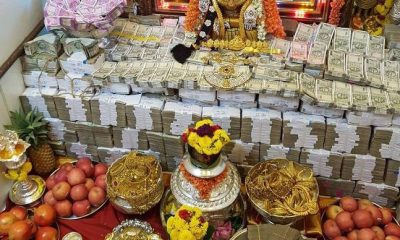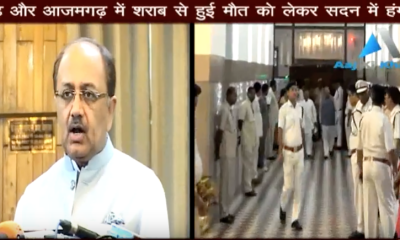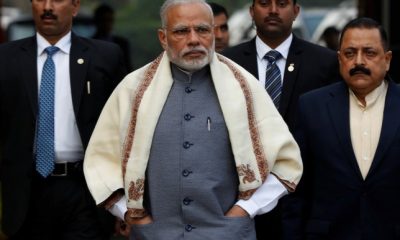Feature
Real estate, Aadhaar bills among laws passed in budget session’s first half

 New Delhi:The first half of budget session of parliament saw sharp political exchanges between the Narendra Modi government and opposition on a range of issues but it also witnessed passage of some crucial legislations including the real estate bill and the Aadhaar bill.
New Delhi:The first half of budget session of parliament saw sharp political exchanges between the Narendra Modi government and opposition on a range of issues but it also witnessed passage of some crucial legislations including the real estate bill and the Aadhaar bill.
The session, which began on February 23 with the address by President Pranab Mukherjee to the joint sitting of two houses, saw the government face some embarrassments in the Rajya Sabha where it lacks majority.
The government was also not able to take up the Goods and Services Tax bill, pending in the Rajya Sabha, during the period and is expected to make a renewed push for its passage in the second half of the session, which begins on April 25 and will continue till May 13.
While the opposition sought to target the government over the controversies surrounding its actions concerning the Jawaharlal Nehru University and Hyderabad University, the government hit out at Congress over the “flip-flop” in the affidavits filed on the Ishrat Jahan encounter case during the United Progressive Alliance government.
The opposition succeeded in getting an amendment adopted in the Rajya Sabha to the motion of thanks to the president’s address despite Prime Minister Narendra Modi’s appeal to adopt it unanimously. On Wednesday, the house recommended five amendments to the Aadhar bill, which was brought as money bill by the government.
The amendments suggested by Rajya Sabha to Aadhaar (Targeted Delivery of Financial and Other Subsidies, Benefits and Services) Bill, 2016, were later rejected by Lok Sabha.
Rajya Sabha has limited powers with respect to money bills but the opposition may have tried to score a political point.
The Lok Sabha on Wednesday also passed the Mines and Mineral (Regulation and Development) Bill, 2016.
The first half of session saw few adjournments though opposition and treasury benches sought to score against each other. The monsoon session and winter session had seen repeated adjournments by the opposition on a range of issues and very little business being transacted.
Members cutting across party lines backed the Real Estate (Regulation and Development) Bill, 2016 with Urban Development Minister M. Venkaiah Naidu terming it “historic” and asserting that the new law will help bring down property prices.
The debate on motion of thanks to the president’s address saw Congress vice president Rahul Gandhi taking potshots on Modi and the prime minister hitting back in his reply. The Lok Sabha also took up discussion on the terror attack on the Pathankot airbase.
The session also saw BJP, Congress and CPI-M members attack the Trinamool Congress over a sting operation allegedly showing several of its leaders taking “bribes”. The matter has been referred to the ethics panel by Lok Sabha Speaker Sumitra Mahajan. The controversy stuck the West Bengal’s ruling Trinamool weeks before the assembly polls in the state.
The ethics committee also served notice on Rahul Gandhi, asking if he had ever declared himself a British citizen.
According to PRS Legislative, which tracks work of parliament, Lok Sabha functioned for 120 percent of its scheduled time while Rajya Sabha functioned for 97 percent of its scheduled time during the first half of session.
Question Hour in Lok Sabha has worked for 87 percent of the scheduled time, while in Rajya Sabha it has worked for 85 percent of its scheduled time, it said.
“During the Session, both houses on a number of occasions sat beyond scheduled time. Key bills were taken up, alongside general discussion on the budgets. While financial business is the focus of a budget session, discussion on important issues like situation in central universities and Aircel-Maxis controversy also took place,” said Trina Roy of PRS Legislative Research.
According to PRS legislative, the bills passed by parliament during the first half of the session include the Election Laws Amendment Bill, 2016, the High Court and Supreme Court Judges (Salaries and Conditions of Service) Amendment Bill, the Bureau of Indian standards Bill and the National Waterways Bill.
Entertainment
Meghalaya Reserves Legalized Gambling and Sports Betting for Tourists

The State Scores Extra High on Gaming-Friendly Industry Index
Meghalaya scored 92.85 out of 100 possible points in a Gaming Industry Index and proved to be India’s most gaming-friendly state following its recent profound legislation changes over the field allowing land-based and online gaming, including games of chance, under a licensing regime.
The index by the UK India Business Council (UKIBC) uses a scale of 0 to 100 to measure the level of legalisation on gambling and betting achieved by a state based on the scores over a set of seven different games – lottery, horse racing, betting on sports, poker, rummy, casino and fantasy sports
Starting from February last year, Meghalaya became the third state in India’s northeast to legalise gambling and betting after Sikkim and Nagaland. After consultations with the UKIBC, the state proceeded with the adoption of the Meghalaya Regulation of Gaming Act, 2021 and the nullification of the Meghalaya Prevention of Gambling Act, 1970. Subsequently in December, the Meghalaya Regulation of Gaming Rules, 2021 were notified and came into force.
All for the Tourists
The move to legalise and license various forms of offline and online betting and gambling in Meghalaya is aimed at boosting tourism and creating jobs, and altogether raising taxation revenues for the northeastern state. At the same time, the opportunities to bet and gamble legally will be reserved only for tourists and visitors.
“We came out with a Gaming Act and subsequently framed the Regulation of Gaming Rules, 2021. The government will accordingly issue licenses to operate games of skill and chance, both online and offline,” said James P. K. Sangma, Meghalaya State Law and Taxation Minister speaking in the capital city of Shillong. “But the legalized gambling and gaming will only be for tourists and not residents of Meghalaya,” he continued.
To be allowed to play, tourists and people visiting the state for work or business purposes will have to prove their non-resident status by presenting appropriate documents, in a process similar to a bank KYC (Know Your Customer) procedure.
Meghalaya Reaches Out to a Vast Market
With 140 millions of people in India estimated to bet regularly on sports, and a total of 370 million desi bettors around prominent sporting events, as per data from one of the latest reports by Esse N Videri, Meghalaya is set to reach out and take a piece of a vast market.
Estimates on the financial value of India’s sports betting market, combined across all types of offline channels and online sports and cricket predictions and betting platforms, speak about amounts between $130 and $150 billion (roughly between ₹9.7 and ₹11.5 lakh crore).
Andhra Pradesh, Telangana and Delhi are shown to deliver the highest number of bettors and Meghalaya can count on substantial tourists flow from their betting circles. The sports betting communities of Karnataka, Maharashtra, Uttar Pradesh and Haryana are also not to be underestimated.
Among the sports, cricket is most popular, registering 68 percent of the total bet count analyzed by Esse N Videri. Football takes second position with 11 percent of the bets, followed by betting on FIFA at 7 percent and on eCricket at 5 percent. The last position in the Top 5 of popular sports for betting in India is taken by tennis with 3 percent of the bet count.
Local Citizens will Still have Their Teer Betting
Meghalaya residents will still be permitted to participate in teer betting over arrow-shooting results. Teer is a traditional method of gambling, somewhat similar to a lottery draw, and held under the rules of the Meghalaya Regulation of the Game of Arrow Shooting and the Sale of Teer Tickets Act, 2018.
Teer includes bettors wagering on the number of arrows that reach the target which is placed about 50 meters away from a team of 20 archers positioned in a semicircle.
The archers shoot volleys of arrows at the target for ten minutes, and players place their bets choosing a number between 0 and 99 trying to guess the last two digits of the number of arrows that successfully pierce the target.
If, for example, the number of hits is 256, anyone who has bet on 56 wins an amount eight times bigger than their wager.


